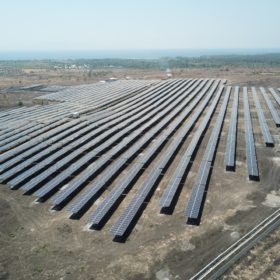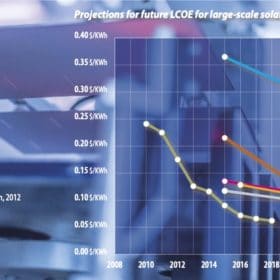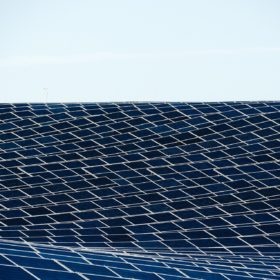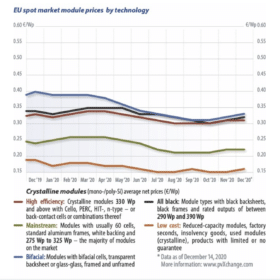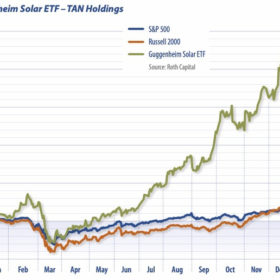Assessing the impact of large-wafer modules
Energy consultancy DNV GL has published new results comparing the performance of modules based on 166mm, 182mm and 210mm silicon cells. The assessment compares Trina Solar’s Vertex modules, which use the largest cell dimension, with unnamed competitors utilizing the other two sizes. Results from system simulations show a clear advantage for the two larger sizes, with 210mm edging ahead in terms of levelized cost of electricity.
Solar system prices to rise – then fall – in 2021, with another record year anticipated
IHS Markit is predicting the world will add 30% more solar capacity this year.
The weekend read: The recent evolution of solar PV energy costs
Forecasts for the levelized cost of electricity (LCOE) of solar PV were hotly contested over the past decade, with one trend predominating: All but the most optimistic outlooks were wrong. pv magazine has gathered data to showcase the recent evolution of solar PV energy costs, and the results are stark. Within just a few years, initial projections become outdated, which means that forecasts of solar PV prices are more art than science.
pv magazine Award: The Winners
In many respects, the past year has been unlike any other. But the innovation and ambition driving the expansion of the solar and energy storage industries is one constant that has remained, Across seven categories, pv magazine’s award winners for 2020 demonstrate high levels of technical expertise, creativity, mass production capabilities, and real market impact from PV and power electronics companies big and small. Following on from the virtual award ceremony held this morning, the winners are….
Jenny Chase predicts up to 194 GW of solar this year
Falling module prices will help PV post another record year after an estimated 132 GW was installed worldwide in 2020, according to an energy transition investment trends report published by Bloomberg New Energy Finance.
Module Price Index: 2020 – Taking the time to say ‘thanks’…
Alongside all of the problems, 2020 has brought us a few promising solar module manufacturer initiatives and developments. Martin Schachinger of pvXchange.com looks back over the second half of the year and offers a quick look at what could be in store for 2021.
Meeting the expectation of a 30+ PV project operation lifetime, from the ground up
Utility scale solar developers are increasingly factoring in very long project lifetimes in their financial models. Given this, expectations for the durability of the components have never been higher. The mounting structure is literally the component on which the weight of these expectations rest – whether fixed tilt or single-axis tracker. But is the material from which the mounting structure is constructed built to last 25, 30 or even more years in the field?
Guggenheim Solar Index: More to come in ‘21
With the wholesale transformation of the power industry from the inside out and other energy transition mega-trends, capital will continue to flow into renewables from ESG, energy funds, and retail, writes ROTH Capital Analyst Jesse Pichel. Look for a greater mix of unsubsidized economic solar projects to support improving revenue visibility, increasing earnings quality, and multiple expansions.
Complementary hybrid PV systems can reduce reliance on storage
Looking back over years of research into the topic of hybrid systems based on different combinations of solar, wind, hydro and other renewables, an international group of scientists found strong potential for strategies to exploit complementarity between the different sources integrate more intermittent renewables onto regional and national grids. The scientists present a series of conclusions and recommendations that aim to push research in hybrid renewables forward.
Renewables cheaper than fossil fuel plants by 2030
A report by McKinsey & Company reinforces the widely-held view renewables will supplant fossil fuels in the energy system but also joins the chorus of voices warning the world is on track to fall well short of limiting global temperature rises this century to 1.5C.

